Every hitter has tendencies. Some have a knack for lifting the ball in the air and others for keeping it on the ground. Some love to pull the ball, while others frequently go to the opposite field.
Whatever they like to do, we can capture and contextualize it using tools such as the Baseball Savant illustrator, which allows any player’s performance to be broken down via numerous different charts.
We’ll focus here on spray charts and spray heatmaps, with the former showing the destination of each of a player’s batted balls, and the latter where those batted balls are most heavily concentrated. Here are seven that allow us to glean some insights about key players heading into 2021.
Juan Soto: Power to all fields
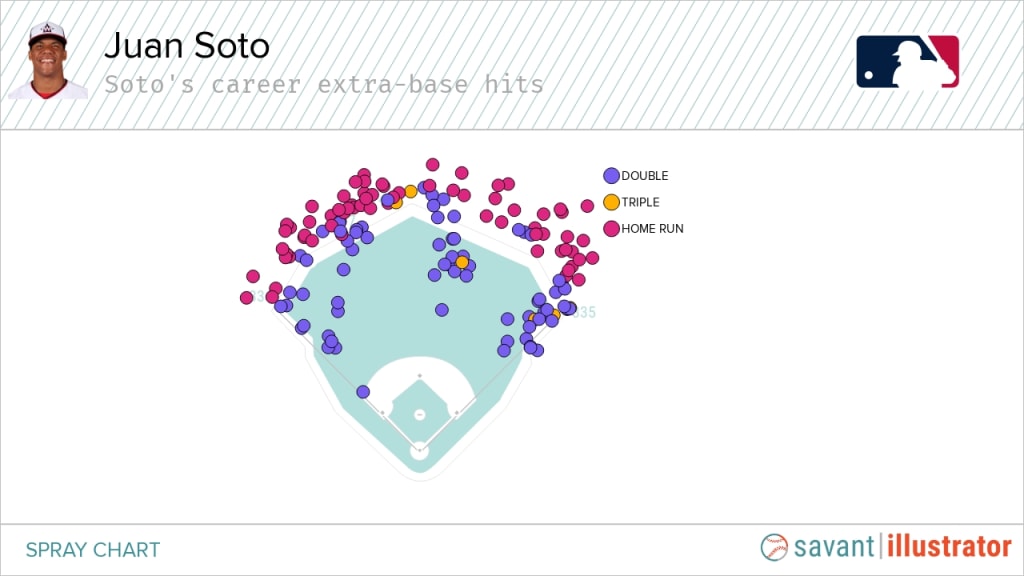
What makes Soto so remarkable is not just the 22-year-old’s astonishing production over his first three MLB seasons, but the fact that he seemingly has no weaknesses. The Nationals phenom handles every type of pitch and reaches every part of the zone. He doesn’t chase, but he attacks strikes. Lefties don’t bother him at all. And not only can he spray the ball around the field -- he can drive it to any part of the park. Soto has 146 career extra-base hits (not including the postseason), and here is how they have broken down by batted-ball direction:
Pulled (to RF): 55 (37.7%)
Straightaway (to CF): 42 (28.8%)
Opposite (to LF): 49 (33.6%)
Most hitters produce the majority of their power to their pull side. Since 2018, 52.7% of all extra-base hits across MLB have been pulled. Soto, on the other hand, is tied for fourth in the Majors in non-pulled XBH (91) since the date of his debut.
DJ LeMahieu: The 'right' man for the Bronx
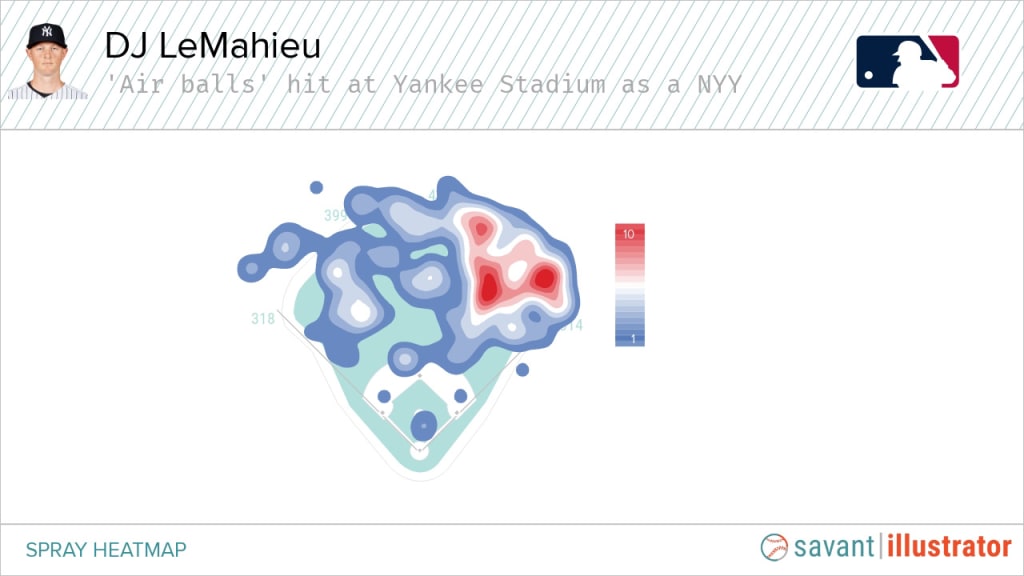
When LeMahieu left Coors Field for Yankee Stadium, there was concern about how he would perform away from Denver’s high altitude. Instead, he may have found a ballpark that was an even better fit for his style, with the right-field short porch a target for a hitter who sends more than half of his line drives and fly balls the opposite way. And with LeMahieu re-signing on a six-year deal, that won’t be changing anytime soon.
Since joining the Yankees in 2019, LeMahieu has hit an eye-popping .366/.421/.642 at home, good for a 182 wRC+ that trails only Mike Trout (minimum 250 home plate appearances). In that time, he has notched 27 of his 36 homers in the Bronx, with 16 of those opposite-field shots. No other MLB hitter has more than 13 oppo homers at home since 2019.
Didi Gregorius: Pull or bust

Speaking of Yankee Stadium’s short porch, the lefty-batting Gregorius got to take aim at it from 2015-19, before jumping last season to Philadelphia (where he just re-signed on a two-year deal). But no matter where Gregorius has played, he has been the anti-LeMahieu in the sense that his power is entirely pull-dependent.
Since 2015, when Statcast debuted, Gregorius has launched 107 home runs. Of those, 98 (91.6%) have been pulled, the highest rate in MLB among 82 hitters with at least 100 big flies. All 107 have been either pulled or hit to the middle third of the field. Gregorius is the only player in that span to hit at least 85 homers without having a single oppo shot.
Shohei Ohtani: In the middle of it
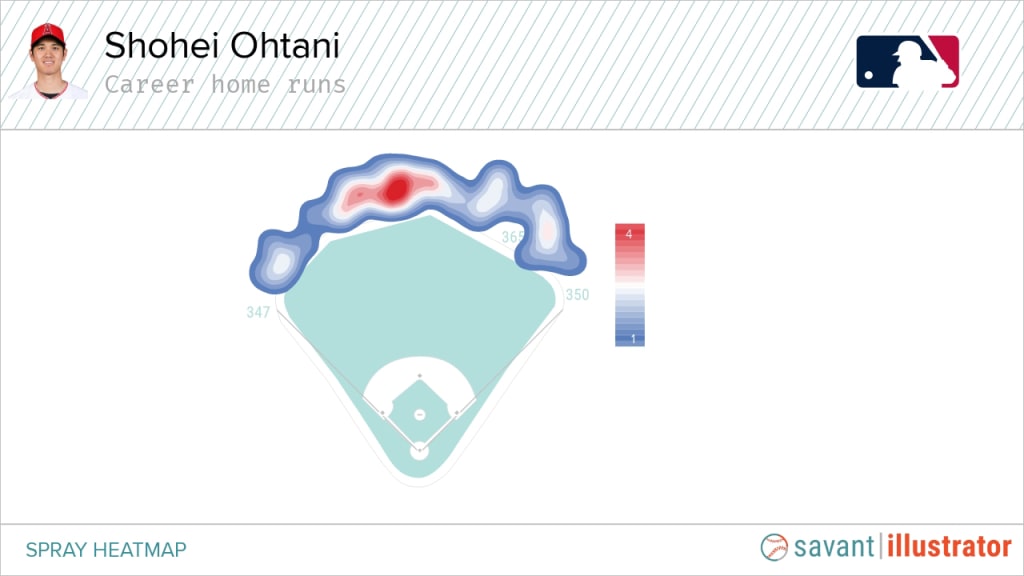
The Angels hope Ohtani will be healthy in 2021 and back to full-time, productive, two-way play. If he is, look out for a lot of heat when he is on the mound and a lot of long balls flying over the center-field wall when he is at the plate.
Ohtani’s swing seems naturally geared to drive the ball to the middle of the field, and he is so strong that the deep dimensions there are not much of an obstacle. More than half of Ohtani’s career homers (24 of 47) have been straightaway shots, MLB’s highest rate over that span, while his .792 slugging percentage on middle-of-the-field contact is among the highest.
Joey Gallo: A slugger, shifted
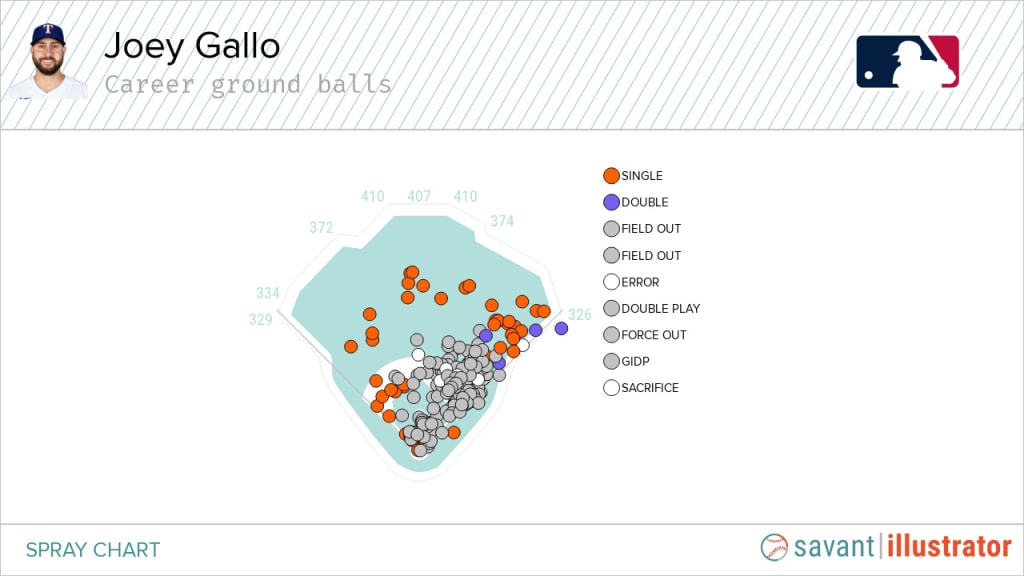
Gallo possesses as much power as anyone in the sport, which helped him to a pair of 40-homer seasons in 2017-18. Two more strong Gallo tendencies: He hits the ball in the air a ton, and he is pull-heavy. Put those factors together and you see why, of Gallo’s 846 career batted balls, only 25 (3.0%) have been grounders sent the opposite way -- one of the lowest rates for a left-handed batter during that time. (Nine of those 25 have been bunts, eight of them going for hits).
Therefore, it’s no wonder that teams love to shift against Gallo. In 2020, opposing infields did it 96.4% of the time, second only to Matt Carpenter. In ‘19, it was an MLB-high 95.9%. They know what the chart above shows: When Gallo does hit the ball on the ground, it won’t be to the left side. Unless he drops a bunt -- which dramatically limits the damage he can do.
Jose Altuve: The hit man

Going back to his breakout 2014 campaign, Altuve’s 1,205 hits rank first in the Majors. Even going back just to ‘15 -- when Statcast debuted -- Altuve (980) ranks a close second to Charlie Blackmon (1,007). All 980 of those knocks can be seen spread out gloriously above.
The tally includes 664 singles, 175 of them of the infield variety, thanks to Altuve’s speed and hustle down the line. Not surprisingly for a player listed at 5-foot-6 and 166 pounds who plays half his games in front of Minute Maid Park’s Crawford Boxes, nearly three-quarters of Altuve’s homers have been pulled. While Altuve added just 42 hits to his total while struggling through a shortened 2020 campaign, his .375 postseason average suggested there will be plenty more going forward.
José Ramírez: Pull the switch
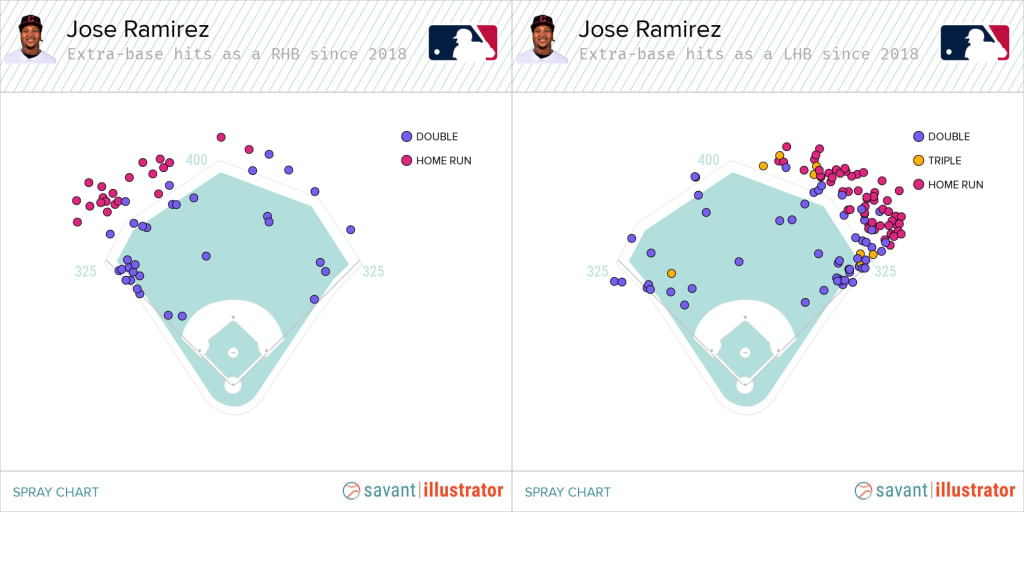
Ramírez has been a top-three AL MVP finisher in three of the past four seasons, and you don’t do that as a switch-hitter without having success from both sides of the plate. Since 2017, he has a .919 OPS from the left side … and a .912 OPS from the right side.
It’s not just that the Cleveland star rakes from each batter's box -- it’s that he does it in a very similar way. Ramírez gets the most out of his 5-foot-9 frame, in part by lifting and pulling. Over the past three seasons, he leads the Majors in the percentage of pulled line drives and fly balls and is just as adept at doing so from either side. In that time, whether batting lefty or righty, more than three-quarters of his extra-base hits have been pulled, as can be seen above.
Andrew Simon is an editor and writer for MLB.com.
